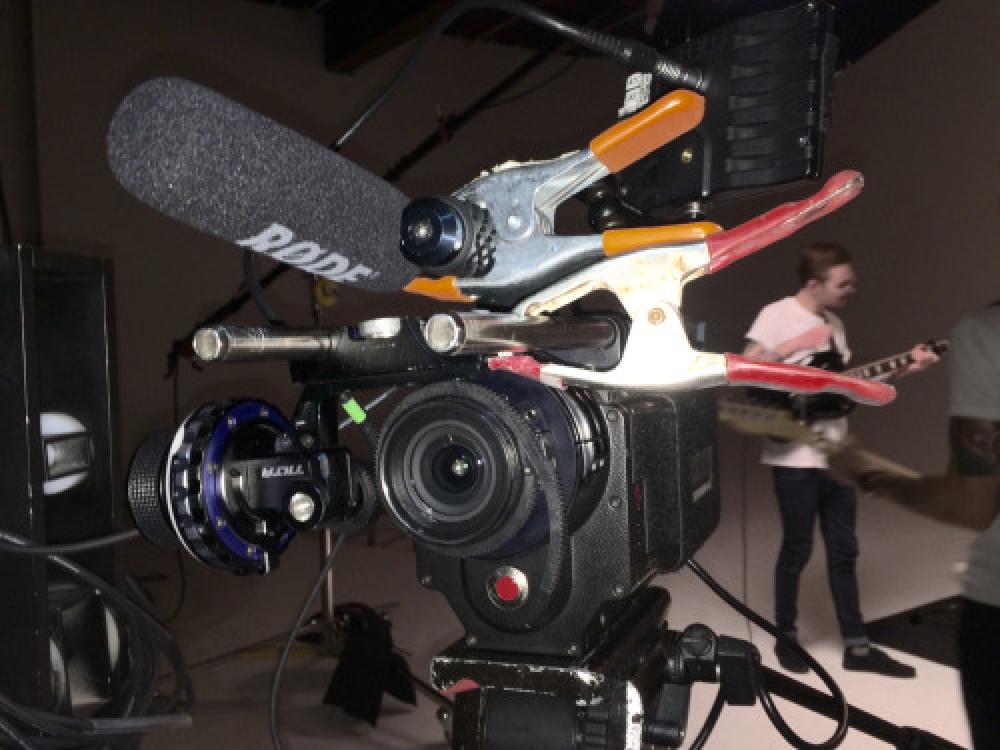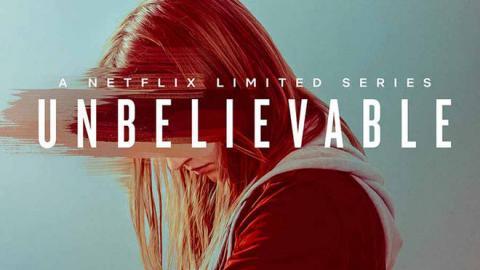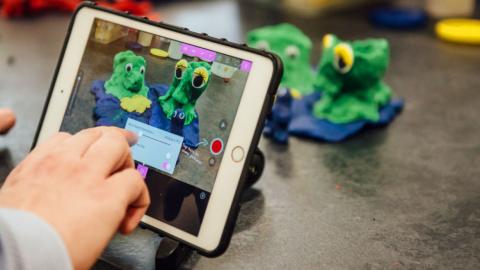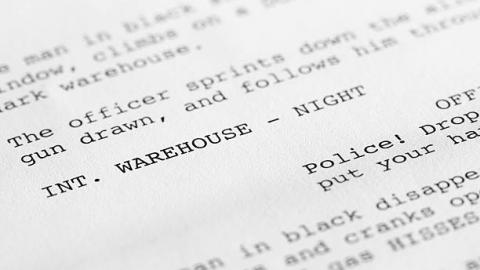Chronicles of a Fledgling Filmmaker: Being a Poor Filmmaker 101
Share with friends

I’ve learned that it’s not impossible to do things like survive an entire month with literally only $30 to your name...
In my last post I talked about how you didn’t need a lot of money to make a good film. Well, I realized I can preach all day about that, but it won’t help if I don’t explain how to go about it. So gather ‘round, kiddies for “Intro to Being a Poor Filmmaker 101.”
First, it helps if you get yourself into the mindset of living and thinking like you have no money. Which, if you live in Los Angeles and aren’t a celebrity, you probably don’t. Lucky for me, I had plenty of training in this area before I even moved down here (nothing quite like having to surf on a friend’s couch for a couple months surrounded by screaming children to make you realize you can get by on your own with virtually nothing). Now that I’m in LA, I’ve learned even more that it’s not impossible to do things like, I don’t know, survive an entire month with literally only $30 to your name. If you can do something like that, making a film on little to nothing is pretty easy.
Low budget pointers
If you’re like me (read: stupidly shy about making new friends), you don’t already have a cast and crew of people to help you at your beck and call. I had only two, one acting as my assistant director and the other as my general production assistant. If you have any sort of visual skill to your name, which I hope you would if you’re directing your own films, you can totally fill in the role as set designer, prop master, and costumer without having to hire anyone extra. I’ll get back to that later. If you do a little research and self-teaching, you can also serve as your film editor (just remember to get a second and third opinion from whoever you can force to sit down and watch once you’re done, because you’ll have looked at your footage for so long by then that you won’t spot the things that need fixing). There, you have just filled in the rolls for the majority of the important crew. Also, cast your own actors. You’re directing them, you know what you want. You don’t need an extra person to do that for you (plus casting is one of the most fun parts about filmmaking. Embrace it. Enjoy it!).
Now we get to the roles that aren’t as easily filled unless you’ve had actual training in that area: cinematography and sound. Are they expensive to hire? Surprisingly, it wasn’t too difficult for me to find a DP (director of photography) who hopped on board for free. He was new to the area and eager to build his resume, so he was all for helping me out for the simple cost of food and transportation (...he drove a Prius, mind you). I paid him a lot more than his asking price of $25 at the end. I got a guy for free who knew what was up and did a lot of extra work that deserved a stupidly handsome bonus, but the point is, you can totally find professional people who are willing to work on your film for next to nothing. Just put ads up on sites like Craigslist, Mandy, and right here on Colaborator (where, consequently, I found this particular DP). Hiring a sound mixer/boom op was quite a bit more difficult. Camera guys will work for nothing, sound guys will laugh at you if you don’t offer at least a small part of your soul for payment. Expect to drop a good portion of your non-budget on a sound guy. Don’t go without one, though, unless you’re doing a selfie video and your actors can be really close to the camera mic at all times. Your film will suffer if you don’t do the sound right.
Actors! We’re in an age where it’s easy to come across people who want to be in the entertainment industry, and there is no shortage of people available who are trying to break into acting. That doesn’t mean you have to take the first people you see off the street for your project, though. If you post everywhere, it won’t take long for people to start responding to your ads. Same as with the crew members mentioned above, if you promise to feed them (and, guys, be kind to your cast and crew - find out what they like and what they may have allergies to, etc. They’re doing your project for free. The least you can do is feed them something better than convenience store hot dogs). They also work for transportation costs, and it’s especially helpful if you can get your project up on IMDB where they can gain professional credits. As far as where to hold casting auditions, if you live in Los Angeles, I’d recommend using CAZT. You can use their rooms for absolutely free as long as you promise to include some of their clients in your auditions and leave everyone a critique afterwards on their site. Totally worth it. You have access to everyone’s audition on video, plus you’re helping the actors out by giving them feedback on their auditions. If you aren’t in LA and don’t have a similar service in your area, just find a local place that’s relatively quiet and suitable for an actor to perform. You don’t have to rent out a soundstage or book a full theater for this. Just choose a place that isn’t shady in a way that makes you look like a serial killer hosting auditions for his next victim.
Tip - make sure you research ahead of time where all your actors and crew members live in relation to your shoot locations. That way you can have a more solid number in your head as to how much you’re going to be spending on gas costs. Also, once you know what everybody can and can’t/won’t eat, plan out your meals for each day of the shoot. Having a clear idea of what you’ll be spending on your people allows you to know how much you can spend on other things. Keep a budget chart. It’ll save your ass in the long run.
Makeup! For a film like mine, this wasn’t a big issue. I had a cast of one woman and the rest men, military types who didn't care to look like models. My actress took care of her makeup on her own. Odds are you’ll probably find the same with your indie film unless you require effects makeup. In that case, go back to placing those ads. Just keep in mind that you’ll need to pay them enough to at least cover their supplies. Makeup kits are expensive and they tend to buy those all on their own. If you ever find a MUA and can make make friends with them, do it. Latch onto them like a python wrapping around a guinea pig. Or something. Just DON’T LET GO. They are valuable individuals! You can save yourself some money if you can get your friend to do it. But don’t use your friends. Again, pay them for their supplies, at least. Don’t be a dick.
Locations! Okay, with the people handled, let’s go back to things like props and set design and location and all such other necessary things. If you need to shoot inside a house, use your own. Or bribe a friend or family member. If it doesn’t exactly fit your mental image of your character’s home, consider how important that is versus how much money you’re going to have to drop on renting an advertised film location. Not. Worth it. Adjust. Making a film is all about having to adjust to changes and mishaps as they come about. Get used to it. Film where it’s free and you’re not going to be in anybody’s way. If you’re being disruptive to ordinary citizens who are just trying to go about their day, you’re going to get kicked out of the area. Or fined. Because you probably don’t actually have a film permit (I’m not saying not to get a film permit because that would be illegal. Just note that they’re very expensive. Especially in LA.) Be as low key as much as possible. If you are filming and someone asks you to leave, do it. Again, adjust. Always have a backup location in mind in case that happens, too. If you expect problems to arise, it won’t be the end of all things if they do. If you need to spend money on a location, use a service like AirBnB or something similar where you can get the house and scenery that you want without having to go through location scouts. I rented a very nice little cabin in the woods for a very reasonable price, and since it was a two-night rental minimum, I treated myself to a little mountain vacation at the end of the shoot. With a hot tub. Can’t go wrong with that.
Props, set design, and wardrobe! If you’re doing something like I did, color scheme was highly important to the film, so I had to go get some stuff that fit my vision. Things can get very expensive if you’re not careful with where you shop and what you choose. And what you do with the items once you’re done. Here’s a cheat: KEEP RECEIPTS FOR EVERYTHING AND DON’T TAKE THE TAGS OFF ANYTHING. Yes, I shouted that at you. Because it’s important. You’re buying stuff for essentially one-time use, here. Take care of it, don’t ding it up, and you can return all that shit once you’re through with it. I think I bought and then returned like $200 worth of set design items. I kept the wardrobe shirts, though, because they were cool and I wanted them. Also, if you don’t have the sort of money up front to go on a shopping spree in a department store with the intent to return things later, hit up your local thrift shops. I found brand new, thick curtains to use as a backdrop at my local Goodwill Outlet. For $4. You can’t generally return items from thrift stores, but for $4 it’s not going to break your bank. They’re also my go-to places for clothing. You would be absolutely amazed what you can find in a thrift store that can suit even your most difficult costuming needs.
Same with props. You know what’s really awesome when you need to film an action film and everyone’s supposed to have a gun? Already having a box full of professional airsoft weaponry that your friend the model-maker can conveniently paint up to look more real (note - have a friend who builds models. They also come in handy). If you need to buy props, hit the thrift stores again or Google it up. You’d be amazed what you can find for cheap online. If you’re a crafty person, think about what you can do to substitute cheap items for expensive ones, or how to create a special effect with minimal supplies. If you saw the trick with the blood pump video in my last post, I took the same concept and created a pump system to make a guy look like he wet his pants. Worked like a charm, and all for the cost of a garden pump, a rubber tube, and some duct tape. You just have to think outside the box a little.
Insurance? Some places will require your film to have insurance in order to place rentals, so be mindful of that (*cough* don’t rent stuff that requires you to have insurance). If you need insurance, I recommend using these guys: https://www.theeventhelper.com/. They’re super cheap, the turnaround is fast as far as getting your documents, you can access them from anywhere, and I’ve personally used them before for a couple events I ran at the Los Angeles Convention Center, so I can vouch that they’re legit. For rentals, https://www.borrowlenses.com is decently priced and they can ship gear straight to you. If you’re in LA and need light and grip gear, http://www.woodennickellighting.com/ is also an excellent place to check out.
Okay, so you have everybody you need, you have all the gear you need, you’ve designed your set, made your props, clothed everyone, fed everyone (feed everyone, I can’t stress this enough! And make sure you have caffeine on hand!), successfully ninja-shot all your scenes at all your locations (maybe you got kicked out of one, but you were prepared, so it’s okay), returned your rented gear without incident because you were careful with your possibly non-insured stuff, and then joyfully returned all your (slightly used) set merchandise to their original stores so you can get money back in your pocket. Hoorah! Now all you need to do is edit!
Software! Adobe is so expensive (they all whined). Yes. Yes, it is. Which is why I don’t use it. That, and it’s overly complicated and I hate complicated things. Unless you’re making the next big comic book movie, you probably don’t need anything that expensive or fancy. To be perfectly honest, when I just need to cut something simple together (like back when I used to do blooper reels on my interview videos or when I’m tinkering with fanvids now), I use my preferred screen recording software (Screenflow for Mac). It’s designed to record your screen so you can make tutorials or record video chats, that sort of thing, but it actually has a very nice editing suite built straight into and it’s about the easiest thing to use out there as far as editing goes. If you need something more advanced, I highly recommend HitFilm. You can get the basic software download completely for free, and it won’t even put watermarks on your end product, or you can get the pro version that has all the special effects bells and whistles for still much less than it costs to get Premiere. Plus, it’s only slightly more difficult to use than Screenflow. Seriously. Watch, like, three tutorial videos and you’ll be cg’ing your own professional gunfire effects into your movie. Cheap and easy. Two of my favorite words (...if your mind went to the gutter there, stop it! You know what I meant!).
So that’s that, in a nutshell! If you do well with crowdsourcing your film, all the above items are even less of a concern when it comes to money, but try not to count on that. If you go into the film firmly believing you’re going to have to cover all the costs yourself, you’ll budget better and therefore you’ll be prepared for the worst. If you get a bunch of money from excited fans, great! It just means that now you can do more, and everything will be sunshine and rainbows!
And that, dear readers, is the end of your “How to Be a Poor Filmmaker 101." You are dismissed.




